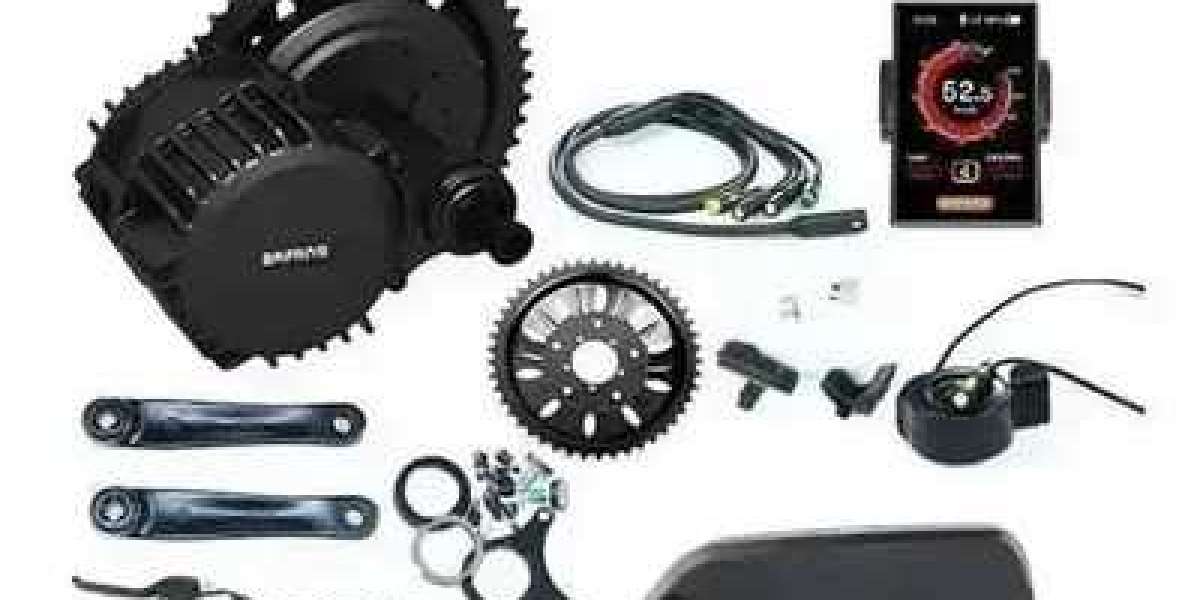Ebike conversion kits have revolutionized the cycling industry, offering a cost-effective way to transform your traditional bicycle into an electric-powered machine. Whether you're looking to upgrade your commute, tackle challenging terrain with ease, or simply enjoy the thrill of electric assistance, these kits provide a versatile solution. In this comprehensive guide, we'll explore everything you need to know about ebike conversion kits, from their components and types to installation tips and key considerations.
What are Ebike Conversion Kits?
Ebike conversion kits are packages that include all the necessary components to convert a standard bicycle into an electric bike. These kits typically consist of an electric motor, battery, controller, and throttle, along with wiring and mounting hardware. By retrofitting your existing bike with these components, you can enjoy the benefits of electric assistance without purchasing a new ebike.
Benefits of Ebike Conversion Kits
- Cost-Effective Solution
One of the primary advantages of ebike conversion kits is their affordability compared to buying a new electric bike. They allow cyclists to leverage their current bicycle frames and components, significantly reducing the overall cost of upgrading to an electric bike.
2. Customization
Ebike conversion kits offer a high degree of customization. Cyclists can choose kits based on their specific needs, such as motor power, battery capacity, and installation type (front hub, rear hub, or mid-drive). This flexibility ensures that the converted ebike meets individual preferences and riding styles.
3. Sustainability
Converting a traditional bicycle into an electric one promotes sustainability by extending the lifecycle of existing bikes. It reduces waste associated with manufacturing new bicycles and contributes to eco-friendly transportation solutions.
4. Enhanced Riding Experience
Electric assistance provided by conversion kits enhances the riding experience by making cycling more accessible and enjoyable. Riders can conquer hills more easily, extend their range, and arrive at their destinations feeling less fatigued.
Types of Ebike Conversion Kits
- Front Hub Motor Kits
Front hub motor kits are mounted on the front wheel hub of the bicycle. They are relatively easy to install and maintain, making them a popular choice for casual commuters and urban riders. However, they can affect the bike's handling, especially in wet or slippery conditions.
2. Rear Hub Motor Kits
Rear hub motor kits are installed on the rear wheel hub of the bicycle. They provide better traction and weight distribution compared to front hub motors, offering a smoother riding experience. Rear hub motors are suitable for various terrains and riding conditions.
3. Mid-Drive Motor Kits
Mid-drive motor kits are installed at the bike's bottom bracket, directly powering the crankset and chain. This setup offers superior torque and efficiency, making it ideal for climbing steep hills and navigating off-road trails. Mid-drive motors leverage the bike's gears for optimized performance.
Installation Tips for Ebike Conversion Kits
- Choose the Right Kit
Select a conversion kit that matches your bike's specifications, such as wheel size, frame compatibility, and intended use. Check manufacturer guidelines and compatibility charts to ensure a seamless installation process.
2. Prepare Your Bike
Before installation, thoroughly clean and inspect your bicycle. Remove any accessories or components that may interfere with the installation of the conversion kit. Ensure the bike is in good mechanical condition to support the added weight and power of the electric components.
3. Follow Manufacturer Instructions
Carefully read and follow the installation instructions provided by the kit manufacturer. Each kit may have specific requirements for wiring, mounting, and calibration. Adhere to these instructions to ensure safety and optimal performance.
4. Test and Adjust
After installation, conduct a thorough test of the electric components. Check the motor, battery, throttle, and controller for proper functionality. Test ride the bike in a controlled environment to evaluate performance and make any necessary adjustments to settings or components.
Key Considerations When Choosing an Ebike Conversion Kit
- Battery Capacity
Evaluate the battery capacity in relation to your riding needs. Higher capacity batteries offer longer ranges but may add weight to the bike. Consider your typical riding distance and terrain to determine the appropriate battery size.
2. Motor Power
Choose a motor with adequate power for your riding conditions. Factors such as terrain steepness, rider weight, and desired speed influence motor selection. Balance power output with efficiency to optimize your riding experience.
3. Support and Warranty
Select a conversion kit from a reputable manufacturer that offers good customer support and a warranty. This ensures you have assistance in case of issues and confidence in the kit's durability and reliability.
Ebike conversion kits provide a practical and customizable way to transform your bicycle into an electric-powered vehicle. By understanding the different types of kits available, installation tips, and key considerations when choosing a kit, cyclists can make informed decisions that enhance their riding experience. Whether you're commuting to work, exploring off-road trails, or seeking a sustainable transportation option, an ebike conversion kit can unlock new possibilities for your cycling adventures.








